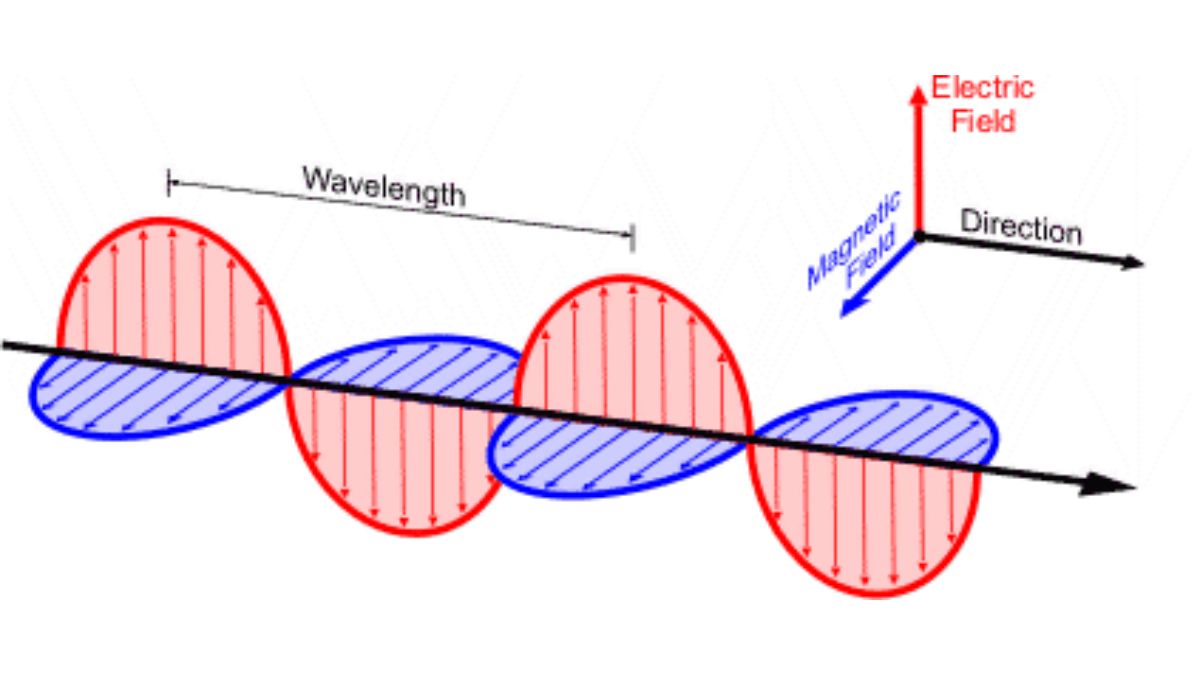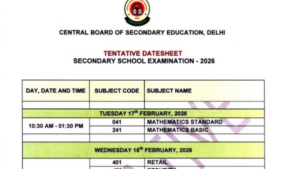The National Testing Agency has expected to conduct the National Eligibility cum Entrance Test at its various examinations centers in May 2026. All the aspirants who are looking for a successful career in the medical field must now start preparing for the exam by reading all topics mentioned in the NEET Syllabus 2026.
In this article below, we have added the NEET Physics MCQs for Electromagnetic Waves Chapter so that all the students who are studying in class 12th or are reading this chapter from the NEET Physics Syllabus 2026 can complete their preparation for the chapter by solving them. Scroll down in the article to find the chapter wise MCQs.
NEET Physics MCQs for Electromagnetic Waves Chapter
Electromagnetic Waves is one of the most conceptual and scoring chapters in NEET Physics. It connects your understanding of oscillations, wave optics, and modern physics while testing your grasp of Maxwell’s equations and the properties of EM waves. Practicing NEET Physics MCQs from this chapter is essential to build strong conceptual clarity and problem-solving speed.
In this article, we will discuss the importance of solving MCQs from Electromagnetic Waves, provide chapter highlights, and include high-quality MCQs with answers and explanations to help you prepare effectively.
Key Topics Covered in Electromagnetic Waves Chapter
The Electromagnetic Waves Chapter is a crucial part of the NEET Physics Syllabus 2026 where students students about the various aspects of the Electromagnetic Waves. These transverse waves, which don’t require a medium, are produced by accelerating charged particles and encompass the electromagnetic spectrum, including radio waves, microwaves, infrared, visible light, ultraviolet, X-rays, and gamma rays. The chapter typically covers the formation and properties of EM waves based on Maxwell’s equations, the concept of the EM spectrum, and their diverse applications in technology and nature
Before practicing MCQs, students should revise the following important concepts:
- Maxwell’s Equations and Their Significance
- Displacement Current and Ampere-Maxwell Law
- Nature of Electromagnetic Waves: Transverse, speed in vacuum, relation between electric and magnetic fields.
- Electromagnetic Spectrum: Properties and applications of different regions like radio waves, microwaves, infrared, visible light, ultraviolet, X-rays, and gamma rays.
- Energy of EM Waves: Energy density and Poynting vector.
- Uses of Electromagnetic Waves in communication, medical applications, etc.
| NEET Physics Chapters | MCQ Link |
|---|---|
| Physics and Measurement | Click Here |
| Kinematics | Click Here |
| Laws of Motion | Click Here |
| Work, Energy, and Power | Click Here |
| Rotational Motion | Click Here |
| Gravitation | Click Here |
| Properties of Solids and Liquids | Click Here |
| Thermodynamics | Click Here |
| Kinetic Theory of Gases | Click Here |
| Oscillation and Waves | Click Here |
| Electrostatics | Click Here |
| Current Electricity | Click Here |
| Magnetic Effects of Current and Magnetism | Click Here |
| Electromagnetic Induction and Alternating Currents | Click Here |
Importance of Solving NEET Physics MCQs for Electromagnetic Waves Chapter
Studying the Electromagnetic Waves Chapter is a crucial factor for the students as it caters a lots of importance in the exam syllabus. Some of the benefits that signifies the importance of solving NEET Physics MCQs for Electromagnetic Waves Chapter are:
- Concept Reinforcement: Practicing MCQs ensures clarity of fundamental concepts like the speed of EM waves, relation between E and B fields, and displacement current.
- Application-Oriented Learning: Many questions test practical knowledge about the electromagnetic spectrum and its real-world applications.
- Exam Readiness: Regular practice familiarizes students with NEET-style question framing and helps in time management.
- Formula Retention: Solving problems repeatedly strengthens memory of important formulas like
and energy density relations.
- Scoring Advantage: This chapter usually contains direct, fact-based, and memory-based questions, which can be quick-scoring in NEET.
NEET Physics MCQs on Electromagnetic Waves Chapter
The aspirants who are looking forward to appear for the NEET Exam must start preparing for the exam by solving more and more Electromagnetic Waves MCQs as listed below:
Question 1: Which of the following electromagnetic waves has the highest frequency?
A) X-rays
B) Ultraviolet rays
C) Gamma rays
D) Microwaves
Answer: C) Gamma rays
Question 2: The energy in an electromagnetic wave is:
A) Stored only in the electric field
B) Stored only in the magnetic field
C) Shared equally by electric and magnetic fields
D) Independent of electric and magnetic fields
Answer: C) Shared equally by electric and magnetic fields
Question 3: Which part of the electromagnetic spectrum is used in satellite communication?
A) Infrared rays
B) Microwaves
C) Ultraviolet rays
D) Gamma rays
Answer: B) Microwaves
Question 4:Which of the following electromagnetic waves has the longest wavelength?
A) Radio waves
B) X-rays
C) Ultraviolet rays
D) Visible light
Answer: A) Radio waves
Question 5: The Poynting vector represents:
A) The direction of electric field
B) The direction of magnetic field
C) The direction of propagation of electromagnetic wave and energy transfer
D) The ratio of electric and magnetic fields
Answer: C) The direction of propagation of electromagnetic wave and energy transfer
Question 6: Which electromagnetic wave is used in sterilization of surgical instruments?
A) Infrared rays
B) Ultraviolet rays
C) Radio waves
D) Microwaves
Answer: B) Ultraviolet rays
Question 7: In an electromagnetic wave propagating along the x-axis, the electric field oscillates along the y-axis. The magnetic field oscillates along:
A) x-axis
B) y-axis
C) z-axis
D) Can be along any axis
Answer: C) z-axis
Question 8: Which of the following statements is false for the properties of electromagnetic waves?
- Both electric and magnetic field vectors are parallel to each other.
- These waves do not require any material medium for propagation.
- The energy in electromagnetic waves is divided equally between electric and magnetic vectors.
- Both electric and magnetic field vectors attain the maxima and minima at the same place and the same time.
Solution: The correct answer is (a). Electromagnetic waves are transverse, which means the electric and magnetic field vectors are perpendicular to each other, not parallel. The other statements are all correct properties of EM waves.
Year Wise NEET Physics MCQs for Electromagnetic Waves Chapter
In the table listed below, we have added the year wise NEET Physics MCQs for Electromagnetic Waves Chapter so that all the students can start preparing accordingly. Click on the links below:
| Year Wise NEET Physics MCQs for Electromagnetic Waves Chapter | |
| Year | Links |
| 2014 | Click Here |
| 2015 | Click Here |
| 2016 | Click Here |
| 2017 | Click Here |
| 2018 | Click Here |









 CBSE Date Sheet 2026 for Class 10 & ...
CBSE Date Sheet 2026 for Class 10 & ...
 CBSE Class 10 Date Sheet 2026, Check 10t...
CBSE Class 10 Date Sheet 2026, Check 10t...
 CUET History Syllabus 2026 (Updated), Do...
CUET History Syllabus 2026 (Updated), Do...









